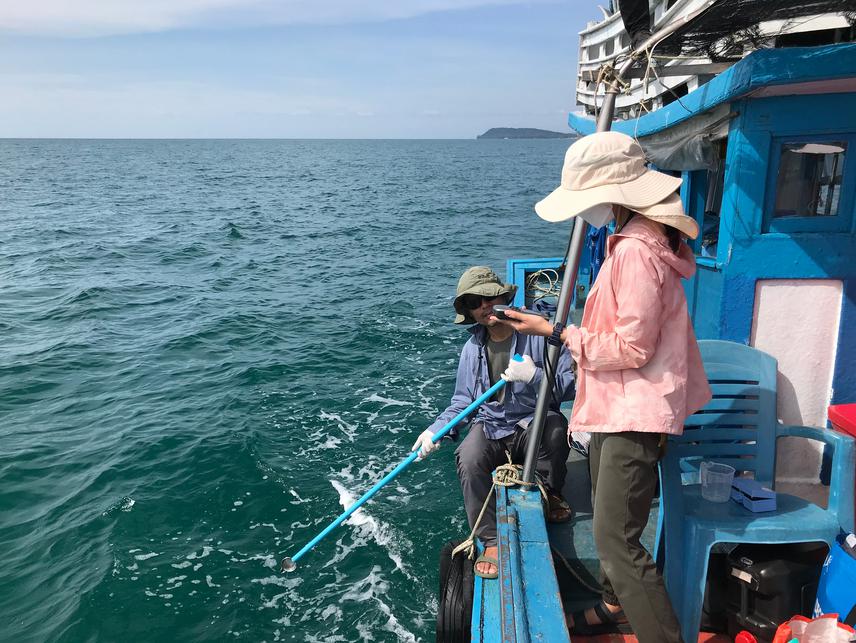Chanikarn Chaorattana
Conventional marine mammal monitoring relying on observational-based surveys (e.g., line transect distance sampling and photo identification) may have limitations due to elusiveness and wide-ranging distribution of the animals, and environmental conditions during surveys. These types of surveys demand observer’s expertise in species identification based on sighting of the elusive and cryptic animals. Such challenges may lead to underestimation of marine mammal detections, and delay in establishment of conservation plans for threatened species. Environmental DNA (eDNA) is a promising approach as a complementary tool to improve effectiveness of marine mammal surveys. Without the need to capture or directly sight the animals, target species can be detected from water samples which they secrete genetic materials into including shed skin, mucus, blow, feces, and/or gametes. Success in eDNA detections relies on appropriate sampling protocols, optimization of laboratory procedures, and bioinformatic pipelines, all of which need to be designed based on environmental conditions within the study areas and target taxa.

Wanlop and Chanikarn were collecting water samples from Gulf of Trat, Thailand. Irrawaddy dolphins (Orcaella brevirostris) were recently sighted from the sampling site. © Chinathip Tosamritkun.
Coastal and freshwater ecosystems of Thailand are important habitats to 10 species of whales, dolphins, and dugong. In addition to the coastal species, up to 18 offshore species were rarely reported form direct sightings and stranded specimens probably due to their wide-ranging distribution. Integration of eDNA metabarcoding and observation-based surveys can increase multi-species detection sensitivity and improve marine mammal monitoring in this region. However, study on their diversity using eDNA metabarcoding approach is still in its infancy especially in tropical marine environment. Understanding of how environmental conditions in the tropics affect eDNA detections and non-detections is essential for the assessment of its potential as monitoring tool, optimization of eDNA assays, and appropriate interpretation of the results for ecological inference.

A juvenile Irrawaddy dolphin in a rehabilitation pool at the Marine and Coastal Resources Research Center, Rayong Province, from the Eastern Gulf of Thailand. ©Worata Klinsawat.
In this study, we aim to (1) develop eDNA-based surveys and molecular techniques to detect marine mammals in Thai coastal and freshwater ecosystems, (2) apply occupancy model to investigate factors affecting eDNA persistence under varying environmental conditions, and estimate probability of occurrence across study sites, and (3) determine potentially high-prioritized areas to support management decisions focusing on where conservation interventions should be targeted. Once eDNA potential is assessed, implementation of this novel method in complementary with conventional monitoring approaches will provide better insights to marine mammal distribution and diversity, promoting collaborations among scientific community, government agencies and the public to improve research in ecology and conservation of this threatened group.